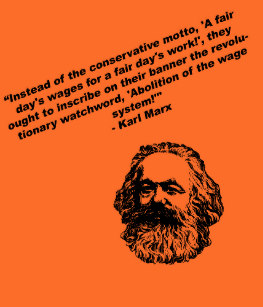“Fashion and costume can offer freedom, protection, power. Sometimes they can even change the world.”
So says Chiaki Shimizu, a textile designer who is on a mission to prove that fashion is an underutilized resource for social change.
Pull on a favorite sweater and feel the tension release. Slip into a tailored jacket and experience a rush of strength and confidence. The power of fashion to change how people feel about themselves and the world is undeniable.
What people don’t understand, though, according to Shimizu, is that fashion is woven into the fabric of history, culture and the environments we live in. It influences music, social customs and art, and is influenced by them; and it can be both empowering and an instrument of repression.
For her doctorate, Shimizu interviewed women who had moved to Tokyo from the countryside to explore how a change in environment affected their fashion choices.
“I expected people to say Tokyo is dirty, crowded and unfriendly,” Shimizu says. “Instead, women were so happy to escape the gossip and judgment in their communities.”
She heard time and again that before moving to Tokyo women were labeled by their communities — even by friends — for using fashion as a form of self-expression. They experienced unrelenting ridicule, which in this age of social media can be debilitating.
“One woman thought she was abnormal because she was called eccentric so many times,” recalls Shimizu. “Another woman had difficulty breathing after a teacher told her life would be hard in her town if she dressed in Kera style.” (Kera is a magazine, now digital-only, that focuses on Harajuku fashion.)
In 2018, Shimizu exhibited “Another Tokyo Scenery II,” which showcased the evolution of fashion as self-expression through seven silhouettes: At first, women felt like they were living within a uniform, someone else’s vision of how they should look. Once in Tokyo, the women accented their clothes with tentative flashes of color or unusual accessories because they were still influenced by their past. As new experiences formed them, louder textures and bolder silhouettes emerged. Continued experimentation led to a cacophony of colors, textures, patterns and silhouettes until the women eventually settled on a style that reflected their individuality.
Shimizu says it was important to recognize the new influences in the women’s lives — culture, friends, experiences, interests — so she incorporated music, photos and videos in her exhibits to demonstrate that connection.
But there is always a flipside, and to fashion it has to be costume: If clothing can be used to express the self, it can also be used to jettison the self.
“There is a reason superheroes wear costumes,” says folklorist Jocelyn Hazelwood Donlon, who lived in Japan for eight years. “In a costume, you feel like you can do anything, get away with anything.”
Costumes, says Donlon, not only provide cover for some people, they are the ultimate escape. Cosplay, for example, may provide relief from a normal life, from the everyday self or from the confines of society. But by definition, she adds, escape can be dangerous. The same costumes that provide escape also protect from retribution. “You (can) feel invincible.”
“On a personal level, costumes are shields to hide behind when feeling anxious or insecure,” she says. But their transformative and “protective” powers can’t be underestimated. Ritual costume, whether headdresses, masks or clothing, for example, has been used to conceal identity and help ward off evil the world over.
Donlon mentions the Japanese February Setsubun ritual — a festival to drive out demons and welcome good fortune. Setsubun involves local adults — usually men — donning scary masks and costumes of Japanese oni (demons), before visiting homes to be “driven” from. Others, including children, throw beans at the demons, yelling “Oni wa soto, fuku wa uchi!” (“Demons out, good fortune in!”). It’s a centuries-old a protection ritual that, like many other costumed festivities, is still performed throughout Japan.
“There is nothing more personal than what people put on their bodies,” says Kimberly Brangwin Milham, a Seattle-based historical costuming fan, who uses costuming to celebrate past periods of history.
 ONI; A JAPANESE DEMON
ONI; A JAPANESE DEMON
“It’s like time travel,” she says. “For a fleeting moment, I’m connected to (people in another) time. Then, I go back home to my modern conveniences. I get the best of both worlds.”
Milham, who attends historically themed events and parties in full costume, believes that it is imperative to research the fashions, fabrics and lifestyles of a given period before designing historical costumes. She explains that such fashions are sometimes overly romanticized. The bustles, corsets, hoopskirts and layers of crinoline that create beautiful silhouettes are terribly confining, which means her costumes determine how she sits, walks or even talks.
Immersion, though, is precisely what Milham finds appealing. Whichever the historical period, understanding the construction and wearing the garments generates a deep respect for the women who once made and lived in them. People’s curiosity over the authenticity of Milham’s costumes gives her an opportunity to converse with modern audiences about how the fashion of every era showcases our commonality as humans. People often ask her about a costume’s restrictive nature, she says, while forgetting that modern fashion, too, has its own restrictions.
“You want to talk about corsets?” she says. “Let’s talk about 7-inch-high heels.”
Costuming as escape is common, but so, too, is costuming for empowerment. YouTuber Dremon Cooper, for example, a queer American male, was inspired by big-screen superheroes and their fight for justice to don a costume of 6-inch-high heeled hot-pink boots and a tight silver shirt, to fight real-world bullies. Now, a YouTube “superhero” for LGBTQ rights, his costume gave him what Donlon calls that feeling of invincibility.
Shimizu sees fashion, too, as a tool for making a better world. She works for People Tree Japan, a company that considers social issues, pollution, sustainability, animal and human rights in its manufacturing processes, and is encouraging more Japanese designers to do the same.
Sustainable fabrics are a good place to start, she says. European labels are already using fabrics made from orange peels and are researching other biosynthetic fabric, such as lab-grown leather that would overcome the ethical issues of killing animals for fashion and the use of toxic chemicals in manufacturing.
“(Groups such as) The Japan Apparel-Fashion Industry Council encourage Japanese designers to tackle ethical issues,” says Shimizu, but specific goals and guidelines are lacking.
“If fashion doesn’t have meaning, it’s just a waste of money.”






